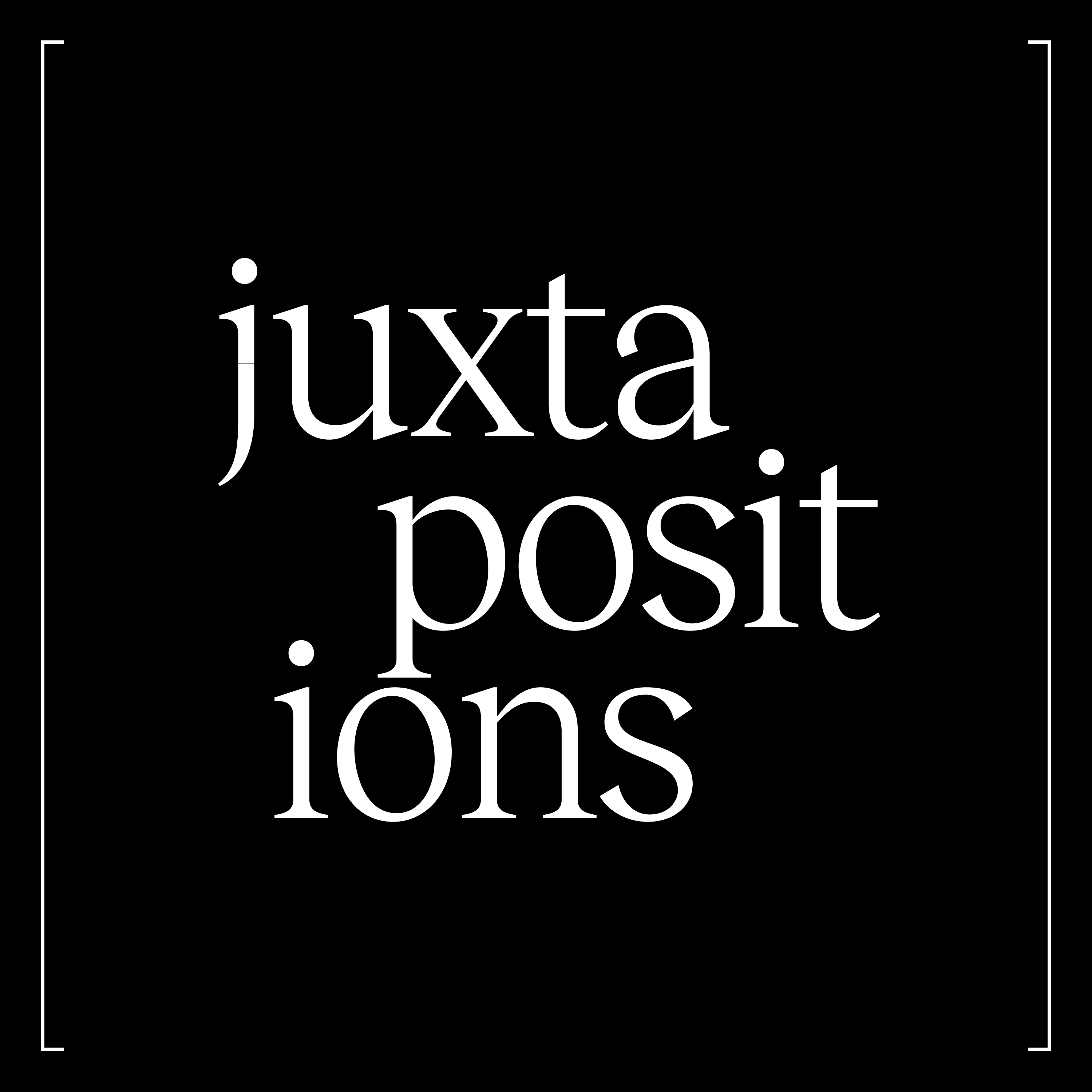Last January we debuted our firm’s first-annual list of Juxtapositions, a new way for Juxtapose to take our greatest insights and observations from the prior year and translate them into tensions we can use to guide us through the next. At our team’s strategy offsite last month, we had the chance to reflect on the challenging, yet fortifying, year that was 2023, and saw that many of the guiding tensions from the prior winter came to bear. Our observations around the risks of capital-intensive strategies, the indispensability of good leadership, and the rewards of persevering through volatility are echoed in our outlook for 2024.
This year, a few key themes bubbled up that we highlight below, namely: the increasing importance of capital efficiency, the opportunity to take advantage of a changing environment to build for the future, today, and the counterintuitively higher upside for early-stage talent. We’re also looking ahead to navigating tensions in specific areas Juxtapose is focused on for 2024, including healthcare, software, and consolidation-oriented platform builds.
We believe wholeheartedly in the unique value that comes from holding two seemingly counterintuitive truths in tension, and are excited to apply this lens to what looks like will be another fun ride of a year. We hope that these insights give you some new food for thought as you move into 2024.
On behalf of the entire Juxtapose team, with humility and excitement,
Founding Partners Jed Cairo and Patrick Chun
MARKETS & FUNDRAISING
Juxtaposition #1
Five years ago it was accepted wisdom that a lot of capital was a “weapon”
AND
Now capital is even more of a weapon, but only when you’re hyper-efficient with it
We’re seeing that the narrative of dollars chasing the “prized” industries of the future was wrong in some cases. In reality, what was happening in many cases was that business progress (e.g. growth) was being driven by capital availability, with more dollars following that “traction” and asset price inflation caused by dollars flowing in the first place. The advent of “mega-round” venture capital saw huge dollars pumped into businesses that couldn't deploy large dollars in a high return on invested capital (ROIC) way.
Companies (both earlier and later stages) are now facing the revitalized focus on ROIC, and the large rounds of 2021 are starting to impact "good" later-stage companies in a subtler way — employees today don't want to go try to create value under some massive preference stack and legacy valuation that looks unrealistic (even if there's still money in the bank).
Venture investors have begun to rotate again into thinking about return on capital when making bets at the earliest stages. With generally scarce access to capital, those who do have access to it have an even stronger tool to build and gain advantage in the current environment. Capital efficiency and capital stewardship have proven their importance once again.
Juxtaposition #2
Companies should be hyper-realistic about where they stand in today’s capital markets
AND
Businesses that will win big need to be building for three to five years ahead
There's an interesting tension today between being eyes wide open and realistic about the current capital market dynamics, while also being able to hold in one's head that the world three to five years from now, when a business is more mature, will potentially look massively different. Said another way, for the savvy business builder, there's a very unique opportunity to design businesses that can not only establish their foundations in this market environment, but are also well equipped to take advantage of a changing market in the future when capital is more abundant, and when the markets again reward acceleration of growth.
BUSINESS MODELS
Juxtaposition #3
Investors are seeking "high quality business models" (e.g. asset-lite)
AND
How we build/scale is just as important as the "business model" itself
Capital efficiency is the new demand. There are some business model attributes that contribute to capital efficiency (e.g. software), but equally, there are approaches taken less often, like buying analog businesses via M&A, which can help achieve scale in a capital-efficient way. The same is true for cultures of frugality that stand in contrast to what most venture-backed businesses have seen the last few years.
Juxtaposition #4
The world is reminded again that building businesses of value is generally very tough
AND
The toughness is multiplied when facing a downturn, especially in cyclical industries with high capital intensity
Building venture-backed businesses is hard in general, and really hard in a tough capital market. Doing so in a cyclical industry or with a capital-intensive model can be even more challenging. Entrepreneurs starting new businesses should be cognizant that the risks their organizations face will evolve based on changes in the industry, funding markets, macroeconomic environment, and where their company is along the maturity curve. Risks - be they market, product, execution, or financing risks - tend to have unpredictable interaction potential.
TALENT
Juxtaposition #5
Talent is being more conservative than ever when it comes to joining early-stage startups
AND
Now is the time when great talent can see the most personal upside from these companies
For the past decade, the idea of joining a rocket ship, or hopping between rocket ships to land on something great, was a beloved talent strategy. Over the last year, this seems to have flipped dramatically in the opposite direction for many entrepreneurial leaders, who are now doubting the value of joining an early stage company or high-growth tech more broadly. Looking at the history of economic value aggregation to talent in cycles past, it’s actually in market environments where valuations are reasonable, great talent retains significant impact, and the “bubble has just popped” when the upside of participating in one of these journeys is highest. Of course, choosing the right business, at the right stage, still matters most.
IMPACT OF TECHNOLOGY AND LABOR
Juxtaposition #6
With the chaotic surge in AI tools, employees everywhere are adopting new technologies and introducing safety risks to their employers
AND
Productivity is just as important as security
AI has become a thrilling yet divisive force in the corporate world, evoking both excitement and caution. It's a high-stakes game where companies navigate the delicate balance between rapid AI adoption and understanding its security implications. This race often sees organizations outpaced by technology's swift evolution, leaving them to grapple with unforeseen security challenges. Amidst this dynamic landscape, a new kind of service will emerge as a corporate guide, illuminating the murky aspects of AI security and enabling organizations to harness its full potential. In high demand, they’ll play a crucial role in shaping the pace and direction of AI integration in the enterprise realm, turning chaos into opportunity.
Juxtaposition #7
The economy has been obsessed with knowledge work (at the expense of manual work) for the past 60 years
AND
Skilled laborers now find themselves in a more powerful position relative to office dwellers
Globalization and automation over the last sixty years have created a modern U.S. economy obsessed with knowledge work at the expense of manufacturing, partly because we've always believed the robots would eventually do the heavy lifting. Now, we face an economy where the robots are turning to knowledge work through advances in generative AI, and we have a generation of knowledge workers who rejected traditional trades in favor of chasing bits and bytes. In 2024, we expect to continue seeing businesses rise to bridge the emergent skills gaps and deliver locally-delivered, physical trades with modern user experiences. We also anticipate that the lessons of pandemic supply shortages will continue to drive shortened supply chains and risk management through on-shoring and hardening of critical manufacturing inputs.
HEALTHCARE
Juxtaposition #8
Some of the most important interactions and conversations in healthcare are taking place outside of the doctor’s office
AND
Providers will need, but are not equipped, to invest in these channels
Our whole healthcare system has been set up to optimize for billable activities with a clinician. These obviously still have a great deal of value, but the combination of provider shortages, shifts towards value-based care, changes to risk adjustment, and an increased recognition of the importance both of communicating with patients in new ways and of addressing issues that may not be “healthcare” as we strictly define it, are catching traditional provider organizations wrong-footed. They don’t have the people, the technology, or the know-how to take advantage of the most critical moments outside of the doctor’s office. Organizations are going to have to become fluent here, creating tremendous opportunity to build new types of healthcare services companies and to build technologies and services to help existing providers transition.



